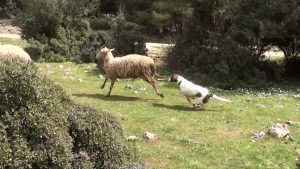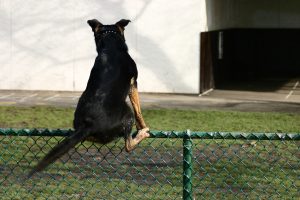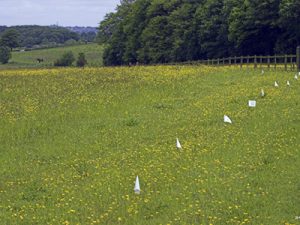What is the best fencing for dogs for large areas?
Covering lots of acres what is the best fencing for dogs?
What is the best fencing for dogs for owners with very large properties? It goes without saying that most large property owners tend to own dogs or cats for both! Often these dogs are working dogs and need to have access to all the land. The cats may be there to hunt mice and rats as well as being pets. Containing pets in large spaces and be an issue for a number of reasons:-
- Prohibitively expensive
- Gates may need to be left open 24/7
- Terrain not suitable for fencing
- Fencing for dogs can be unsightly
- Planning restrictions
Securing a very large estate can be a logistical nightmare. Gates may have to left open for farm traffic and heavy goods vehicles. In addition, there may be areas where the dogs need to be excluded from rather than contained within an area. If the terrain is very steep or wooded it may not be possible to install a traditional fence. The cost may also be an issue when looking at dog fencing ideas on a large scale.
So what are the alternative dog fencing solutions?
A dog containment fence is an innovative solution for large areas or areas that are difficult to fence. When looking at dog fencing ideas this is often an option people have not come across before. Despite this type of fencing for dogs being available for over 40 years, it is still a relatively new concept in the UK.
What is an electronic containment fence?
In a nutshell, an electronic containment fence is a transmitter, boundary wire, and computer collar. A transmitter is attached to the boundary wire which surrounds the property. Acting as an antenna the wire conducts a radio signal which interacts with the collar worn by the pet. If the pet approaches the wire the collar will activate with a high pitched warning beep. Following the warning beep, the collar emits a static impulse set to the pet’s personality. Through the training, the pet quickly learns to avoid the area and warning beep.
What are the advantages of an electronic fence?
- Affordability – extremely economical for fencing for dogs on a large area
- Gates can be left open 24/7
- Can be installed on any terrain – even through water
- Fencing is invisible, so will not interfere with vistas
- Can run in conjunction with traditional fencing as a backup
- Can be removed if the owner moves property and easily altered
- No planning restrictions
- Quick lead time to install and train
Why choose electronic fencing for dogs and cats?
Naturally, people have concerns about how effective this type of fencing for dogs really is. DogFence Ltd pioneered a full installation and training service across the UK. Interestingly, when installed correctly with full training this type of fencing is more effective than traditional fencing. By using our own employees and the latest hydraulic burial equipment we are able to offer a superior service. Furthermore, our Installers are all qualified to train your pets and give advice on placement and use of the fencing systems.
To date our largest electronic fencing for dogs covers 6.5km. This installation is installed in Devon and runs up and down valleys, through streams and wooded areas. As with most rural terrains, it is rough and ready. The owner was having issues with his dogs chasing neighbouring livestock. Since the fence was installed the dogs have remained safe and at home.
Interestingly the next largest electronic fence system that we have installed is for cats. Covering over 350 acres this system is installed on a stud farm. The cats were drawn across a road to a stable area where they were hunting. Sadly the owners had lost several cats on this fast B road. Since installing the electronic fence over 10 years ago all the cats have been safe. The cats are safe to roam the entire estate and the owners have peace of mind.
Are electronic dog fencing solutions safe?
Absolutely, this type of fencing has been used across the world for over 40 years. In 2016 the results of a long study into the use of the containment fence for cats was released. The tests were carried out by Lincoln University’s Feline Experts. Not only were the tests conclusive that there are no adverse welfare effects but they also proved that the systems save cats lives. Interestingly it was also noted that the owners of cats using the electronic dog fencing solution as against no fence had a closer bond with their pets. The UK Government has also agreed that containment fences save lives and will issue new regulations to ensure that all dogs and cats are offered training with these fences.
If you would like to learn more about fencing for dogs using an electronic dog fence please visit our web site or contact us for a quick no obligation quote. Using the latest mapping tools we don’t need to visit your property to give you an estimate. If you have a difficult boundary we offer a screen share service where we can “draw” your requirements in realtime.
To learn more visit www.dogfence.co.uk and for a quick, free no obligation quote click here or call 01628 476475.













